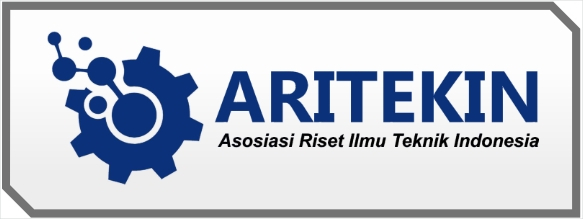Experimental Study on the Corrosion Rate Influence Caused by Seawater on Aircraft Structures
Abstract
Airplanes are a very fast and time efficient means of transportation. In Indonesia itself, because the country is an archipelago and has a tropical climate, rainwater and seawater are the main problems in the aviation world, this is evidenced by the corrosion that occurs in every aircraft maintenance. Factors that cause corrosion and corrosion rate are acidity, environmental conditions, and materials used. The material that is often used in aircraft is 2024 T-3 aluminum material which is strong, lightweight, and also resistant to corrosion, but because 2024 T-3 aluminum has several mixtures of other materials such as iron, copper, and copper,other materials, then aluminum can also be exposed to corrosion and corrosion rates. Corrosion and corrosion rate can be determined using the weight loss method which is used to measure the rate of corrosion that occurs, it is proven in 72 hours the material has experienced a corrosion rate of 0.002 mpy and the corrosion rate continues to increase every day, and to see the corrosion that occurs on the material used micro photos to see the type of corrosion. But the weight loss method is not very accurate because the weight loss that occurs from the material is the result of abrasion when sanded. In addition, seawater is the biggest influence on the corrosion rate problem when compared to rainwater.
Keywords
Full Text:
PDFReferences
El Azmi, N. Z. (2018). Studi Kasus Korosi Pada Aluminium Kandidat Material Struktur. 72.
Kalium, I., Cro, K. K., Wibowo, W., & Ilman, M. N. (2011). Studi Eksperimental Pengendalian Korosi pada Aluminium 2024-T3 di Lingkungan Air Laut Melalui Penambahan. 5(1), 10–16.
Laksono, W. (2018). Pada Sambungan Baja a36 Dan Baja a53 Underwater Welding Pada Sambungan Baja a36 Dan Baja a53. 10–18.
Setiawan, F. (2022). JOURNAL OF MECHANICAL ENGINEERING , Pengaruh Variasi waktu Proses Hot Dipping Alumunizing Coating Stainless Steel 304 Terhadap Karakteristik Material dan Konduktivitas Termal The Effect of Time Variations in the Hot Dipping Alumunizing Coating Stainless S. 6(01), 32–47.
Alaik Farhan Maulidi, S. J. (2022). Pengaruh Natrium Clorida, Asam Sulfat dan Air Laut terhadap Laju Korosi Baja SS 400 sebagai Bahan Material Kapal dengan Metode Weight loss. JURNAL TEKNIK PERKAPALAN, 43-44.
Budi Utomo, R. S. (2017). Studi Dan Karakterisasi Laju Korosi Logam Aluminium Dengan Pelapisan Membran Sol-Gel. Jurnal Teknik Mesin, 191.
HUDA, C. (2017). Analisis Laju Korosi Material Aluminium 5083 Sebagai Aplikasi Bahan Lambung Kapal. Jurnal Pendidikan Teknik Mesin UNESA(02), 6.
Jamaludin1. (2019). 42Pengaruh Ketebalan Elektroplating Menggunakan Nikel dan Krom pada Aluminium Alloy 2024 terhadap Laju Korosi. II, 44.
Pujono. (2018). PERPATAHAN FATIK MATERIAL ALUMINIUM 2024-T3 DENGAN PENGELASAN FSW. 31.
Rosyidin, A. (2017). PERBAIKAN, DAMPAK KOROSI PADA PESAWAT UDARA BOEING 737. 5.
Sari, A. K. (2017). STUDI KARAKTERISASI LAJU KOROSI LOGAM ALUMINIUM DAN PELAPISAN . 37-38.
Surip Prasetyo, U. B. (2019). Analisa Laju Korosi Pada Material Aluminium 5083 Menggunakan Media Air Laut Sebagai Aplikasi Bahan Lambung Kapal. 163-166.
Syahril, M. (2006). Patah Nose Landing Gear Pesawat Terbang. Jurnal Sains Materi Indonesia, 71-77.
Wibowo, W. (2011). Studi Eksperimental Pengendalian Korosi pada Aluminium 2024-T3 di Lingkungan Air Laut Melalui Penambahan. 5(1), 10-16.
DOI: https://doi.org/10.31315/jmept.v4i1.7560
Refbacks
- There are currently no refbacks.
Copyright (c) 2023 Journal of Metallurgical Engineering and Processing Technology
Journal of Metallurgical Engineering and Processing Technology indexed by:

Journal of Metallurgical Engineering and Processing Technology (JMEPT)
Department of Metallurgical Engineering, UPN "Veteran" Yogyakarta
Metallurgical Research and Development Centre (MRDC)-UPNVY
Gd. Urip Sumohardjo Lt. 2
Jl. Babarsari No. 2, Tambakbayan, Yogyakarta 55281
View My Stats










1.png)
1.png)